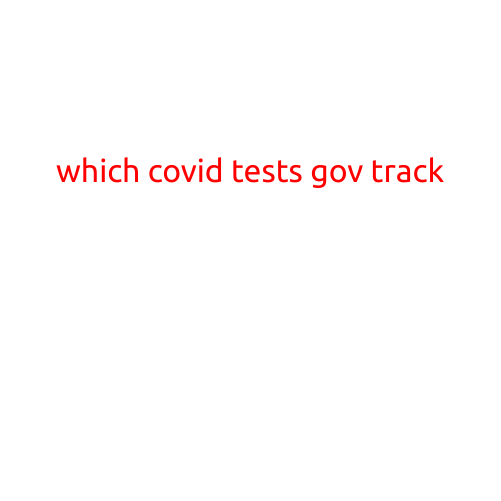
Which COVID Tests Does the Government Track?
As the COVID-19 pandemic continues to spread globally, governments around the world have implemented various measures to track and contain the spread of the virus. One crucial aspect of these efforts is the tracking of COVID-19 tests, which helps health authorities monitor the spread of the virus, identify hotspots, and make informed decisions to mitigate its impact.
The Types of COVID Tests Tracked by Governments
There are several types of COVID-19 tests that governments track, including:
- Rapid Antigen Tests (RATs): These tests detect the presence of the SARS-CoV-2 virus in a person’s body, usually within 15-30 minutes. RATs are commonly used in public health settings, such as clinics and hospitals.
- Polymerase Chain Reaction (PCR) Tests: These tests are considered the gold standard for COVID-19 diagnosis. They detect the genetic material of the virus and are usually conducted in laboratory settings.
- Lateral Flow Tests (LFTs): These tests use a small sample of a person’s saliva or nasal swap and detect the presence of the virus. LFTs are often used in self-testing kits and are becoming increasingly popular.
- Serology Tests: These tests detect the presence of antibodies in a person’s blood, which indicate whether they have been infected with COVID-19 in the past. Serology tests are useful for tracking the spread of the virus and identifying areas of high transmission.
How Governments Track COVID Tests
Governments track COVID tests using various methods, including:
- Case reporting: Governments receive reports of positive COVID-19 tests from healthcare providers, laboratories, and other testing facilities.
- Electronic health records: Many healthcare providers and laboratories use electronic health records (EHRs) to track test results and report them to government authorities.
- Surveillance systems: Governments have established surveillance systems to monitor and track COVID-19 cases, including tests, Hospitalizations, and deaths.
- Data analytics: Governments use data analytics tools to analyze test results, track trends, and identify areas of high transmission.
Why Governments Track COVID Tests
Governments track COVID tests to:
- Monitor the spread of the virus: Tracking test results helps governments understand the spread of the virus, identify hotspots, and make informed decisions to contain it.
- Identify high-risk areas: Governments use test data to identify areas with high transmission rates and take targeted measures to reduce the spread of the virus.
- Evaluate the effectiveness of public health measures: Tracking test results helps governments evaluate the effectiveness of public health measures, such as lockdowns, social distancing, and mask-wearing.
- Inform policy decisions: Governments use test data to inform policy decisions, such as when to relax or tighten restrictions, and when to implement public health measures.
Conclusion
Tracking COVID tests is a crucial aspect of the global response to the pandemic. By understanding which tests are tracked, governments can make informed decisions to contain the spread of the virus, identify high-risk areas, and evaluate the effectiveness of public health measures. As the pandemic continues to evolve, the importance of tracking COVID tests will only continue to grow.